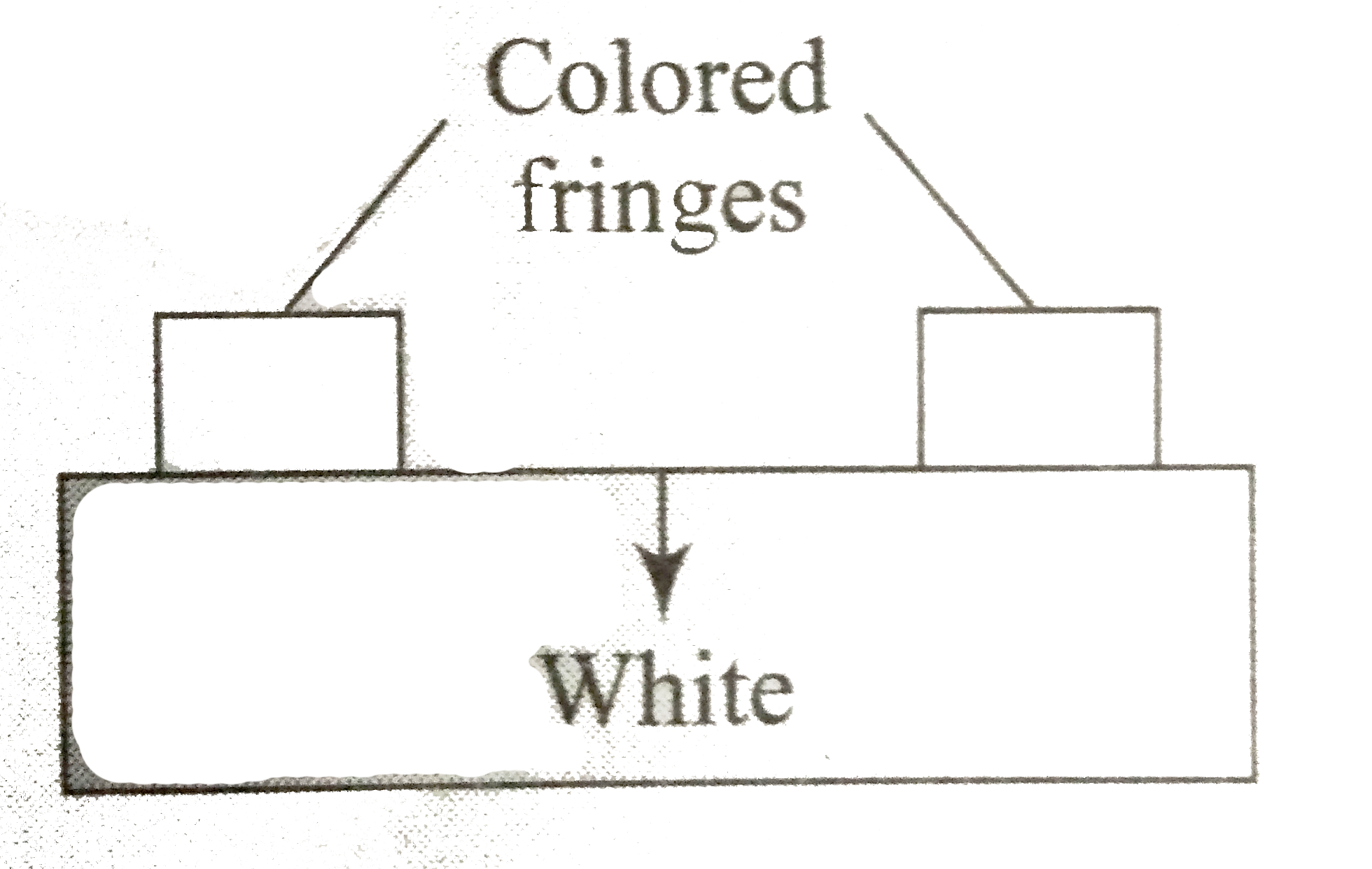When white light source is used for obtaining interference, the central fringe is ………………. .
To solve the question regarding the central fringe when a white light source is used for obtaining interference, we can follow these steps:
Step 1: Understand the Concept of Interference
Interference occurs when two or more waves overlap and combine to form a new wave pattern. In the case of light waves, this can result in bright and dark fringes on a screen.
Hint: Remember that interference patterns depend on the phase difference between the waves.
Step 2: Identify the Source of Light
When using a white light source, it emits multiple wavelengths corresponding to different colors (red, orange, yellow, green, blue, indigo, violet).
Hint: Consider how each color in white light will behave differently due to its unique wavelength.
Step 3: Determine the Central Fringe
The central fringe is the point on the interference pattern where the path difference between the two waves is zero. This means that all colors of light will constructively interfere at this point.
Hint: Think about the condition for constructive interference, which occurs when the path difference is an integer multiple of the wavelength.
Step 4: Analyze the Resulting Color
Since all colors of light (wavelengths) reach the central fringe with zero path difference, they will all contribute to a bright fringe at that point. Therefore, the central fringe will appear white because it is a combination of all the colors present in white light.
Hint: Visualize how mixing colors of light can result in white light.
Step 5: Conclusion
Thus, when a white light source is used for obtaining interference, the central fringe is white.
Final Answer: The central fringe is white.
Summary of Steps:
1. Understand interference.
2. Identify the light source as white light.
3. Determine that the central fringe has zero path difference.
4. Conclude that the central fringe will be white due to the combination of all colors.
Interference occurs when two or more waves overlap and combine to form a new wave pattern. In the case of light waves, this can result in bright and dark fringes on a screen.
When using a white light source, it emits multiple wavelengths corresponding to different colors (red, orange, yellow, green, blue, indigo, violet).
The central fringe is the point on the interference pattern where the path difference between the two waves is zero. This means that all colors of light will constructively interfere at this point.
Since all colors of light (wavelengths) reach the central fringe with zero path difference, they will all contribute to a bright fringe at that point. Therefore, the central fringe will appear white because it is a combination of all the colors present in white light.
Thus, when a white light source is used for obtaining interference, the central fringe is white.
1. Understand interference.
2. Identify the light source as white light.
3. Determine that the central fringe has zero path difference.
4. Conclude that the central fringe will be white due to the combination of all colors.
Topper's Solved these Questions
- WAVE OPTICALBOOK - MODERN PUBLICATIONCHAPTER - WAVE OPTICALEXERCISE - Revision Exercises (Short Answer Questions)
23 Videos
- WAVE OPTICALBOOK - MODERN PUBLICATIONCHAPTER - WAVE OPTICALEXERCISE - Revision Exercises (Long Answer Questions)
9 Videos
- WAVE OPTICALBOOK - MODERN PUBLICATIONCHAPTER - WAVE OPTICALEXERCISE - Revision Exercises (Additional Questions)
12 Videos
- SEMICONDUCTOR ELECTRONICS METERIALS DEVICES AND SIMPLE CIRCUITS BOOK - MODERN PUBLICATIONCHAPTER - SEMICONDUCTOR ELECTRONICS METERIALS DEVICES AND SIMPLE CIRCUITS EXERCISE - CHAPTER PRACTICE TEST FOR BOARD EXAMINATION
12 Videos
Similar Questions
What is the condition of obtaining bright interference fringes?
View SolutionA beam of light consists of two wavelengths, 6300Åand5600Å. This beam of light is used to obtain an interference pattern in YDSE. If 4th bright fringe of 6300Å coincides with the nth dark fringe of 5600Å from the central line, then find the value of n.
View Solution
Knowledge Check
When monochromatic light is replaced by white light in Fresnel's biprism arrangement, the central fringe is
AcolouredBwhiteCdarkDNone of theseStatement-1: if white light is used in YDSE, then the central bright fringe will be white.
Statement-2: In case of white light used in YDSE all the wavelengths produce their zero order maxima at the same position.AStatement-1 is true, statement-2 is true: Statement-2 is a correct explanation for statement-1BStatement-2 is true, statement-2 is true: statement-2 is not a correct explanation for statement-1CStatement-1 is true, Statement-2 is false.DStatement-1 is false, Statement-2 is true.In Fresnel’s biprism experiment, which of the following light sources used to locate central fringe :
Asodium lampBmono-chromatic sourceCwhite lightDnone of the above
Figure 2.39 shows a photograph that illustrates the kind of interference fringes that can result when white light, which is a mixture of all colors, is used in Young's experiment, Except for the central fringe, which is white, the bright frings are a rainbow of colors. Why does Young's experiment separate white light into the constituent colors? In any group of colored fringes, such as the two singled out in the figure, why is red farther out from the central fringe than green is? And finally, why is the central fringe white rather than colored?

View SolutionIn interference microscope, the source of light is
View SolutionAssertion : A white source of light during interference forms only white and black fringes.
Reason : Width of fringe is inversely proportional to the wavelength of the light used.
View SolutionAssertion: If white light is used in place of monochromatic light in YDSE, then central point is white, although at other places coloured fringes will be obtained.
Reason: At centre, path difference is zero for all wavelengths. Hence, all wavelengths will interfere constructively.
View SolutionAssertion: In Young's double slit experiment using white light, the central fringe is white, the violet coloured fringe will be seen nearest to the central fringe.
Reason: Red coloured fringe will be seen near central fringe.
View Solution
